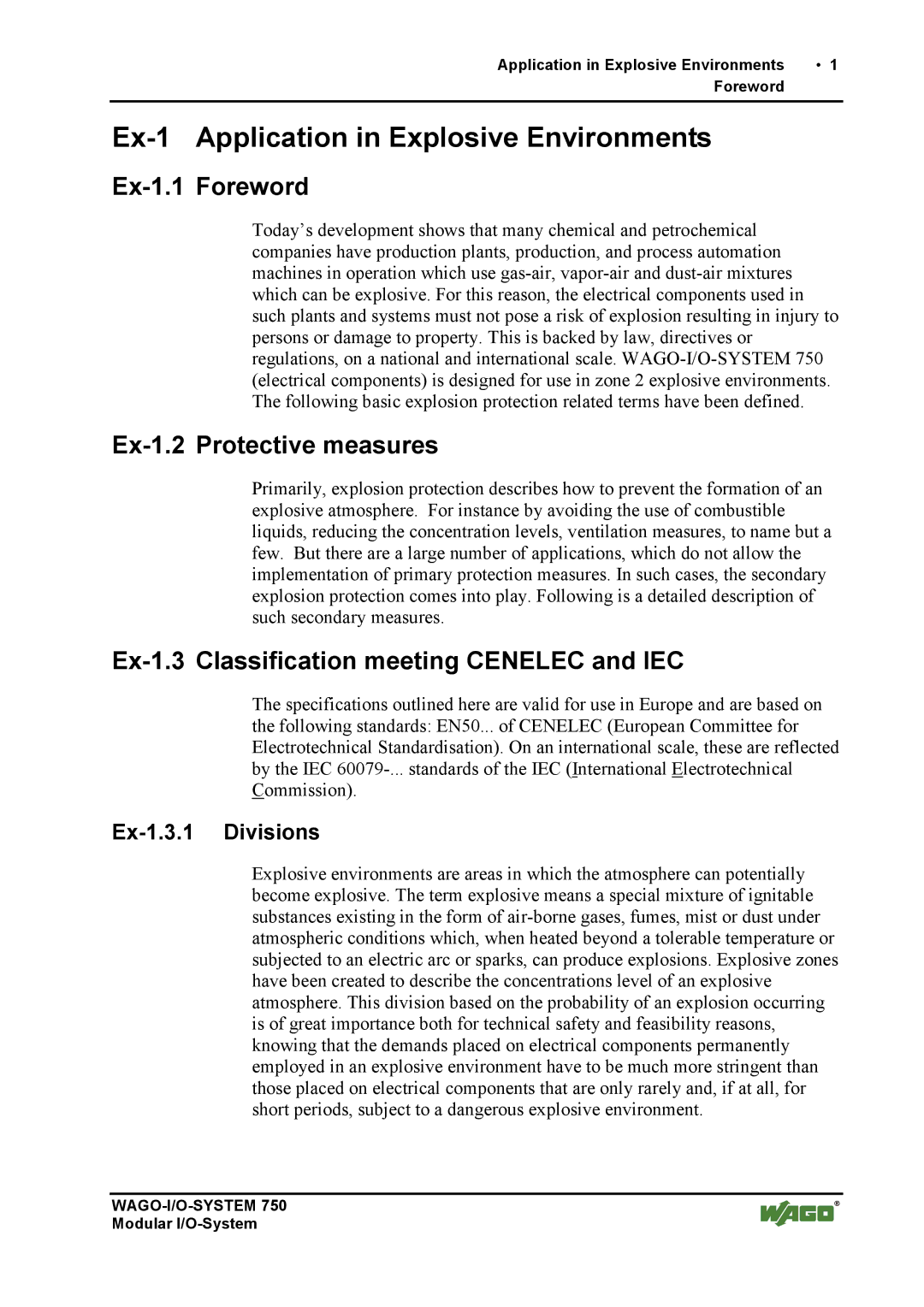Application in Explosive Environments | • 1 |
Foreword |
|
|
|
Ex-1 Application in Explosive Environments
Ex-1.1 Foreword
Today’s development shows that many chemical and petrochemical companies have production plants, production, and process automation machines in operation which use
Ex-1.2 Protective measures
Primarily, explosion protection describes how to prevent the formation of an explosive atmosphere. For instance by avoiding the use of combustible liquids, reducing the concentration levels, ventilation measures, to name but a few. But there are a large number of applications, which do not allow the implementation of primary protection measures. In such cases, the secondary explosion protection comes into play. Following is a detailed description of such secondary measures.
Ex-1.3 Classification meeting CENELEC and IEC
The specifications outlined here are valid for use in Europe and are based on the following standards: EN50... of CENELEC (European Committee for Electrotechnical Standardisation). On an international scale, these are reflected by the IEC
Ex-1.3.1 Divisions
Explosive environments are areas in which the atmosphere can potentially become explosive. The term explosive means a special mixture of ignitable substances existing in the form of
